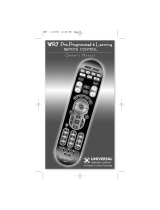
42
..........................................
41
............................................
40
12 Interrupt Status Register
.......................................
38
11 Configuration Register
.........................................
36
10 Communications Register
......................................
35
.......................................
34
9.6 Receive pattern detection
....................................
33
9.5 Accessing the SCC while FIFOs are enabled
................
33
9.4.4 Controlling the FIFOs
....................................
33
9.4.3 Reading current FIFO status
.............................
33
9.4.2 Resetting the FIFOs
......................................
32
...........................................
32
9.4 FIFO status and control
......................................
31
9.3.2 Using channel B for receive
..............................
30
9.3.1 Using channel A for both transmit and
..........................................................
29
9.3 SCC configuration for FIFO operation
......................
29
.............................................
28
............................................
28
..........................................
28
9.1 Enabling and disabling the FIFOs
..........................
28
..................................................
27
8.5.2 Software Interrupt Acknowledge
........................
27
8.5.1 Register Pointer Bits
......................................
27
8.5 SCC Incompatibility Warnings
.............................
26
8.4.4 Other signals are not used
...............................
26
8.4.3 Extra handshaking for channel A
........................
26
8.4.2 Extra clock support for channel A
.......................
26
8.4.1 Receive data and clock signals
...........................
26
8.4 Support for SCC Channel B
................................
25
8.3 SCC Data Encoding Methods
...............................
25
8.2 Baud Rate Generator Programming
.........................
22
8.1 Accessing the registers
.......................................
21
8 SCC General Information
.......................................
20
.........................................................
19
.......................................................
18
5 Using the MPAC-100 with Syncdrive
...........................
14
4 Other Operating Systems
........................................
9
3 Windows 95/98 Installation
......................................
8
............................................
7
.........................................
7
......................................................
Table of Contents





















